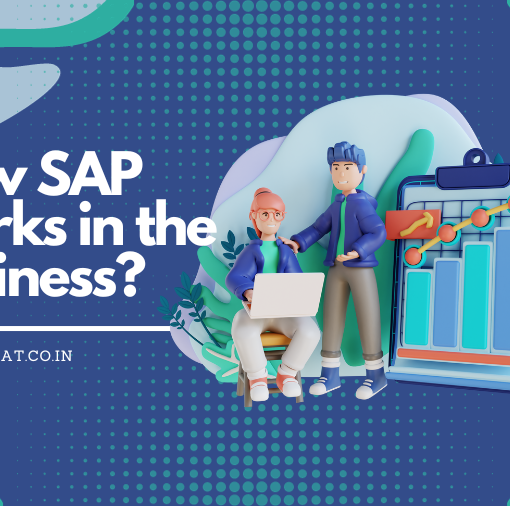In the fast-evolving world of business, connectivity and integration are key to staying competitive. Companies need to seamlessly link their disparate systems, applications, and data sources to facilitate data flow, automate processes, and drive efficiency. This is where SAP Cloud Platform Integration (SAP CPI) comes into play. In this blog, we’ll delve into what SAP CPI is, its importance, and how it empowers organizations to achieve seamless integration and drive digital transformation.
What is SAP Cloud Platform Integration (SAP CPI)?
SAP Cloud Platform Integration, commonly referred to as SAP Cloud Platform Integration, is a cloud-based integration platform provided by SAP. It enables organizations to connect their on-premises and cloud applications, systems, and data sources to streamline business processes. SAP CPI offers a comprehensive set of integration tools and services, making it easier for businesses to achieve end-to-end connectivity across their IT landscape.
The Importance of SAP CPI
1. Integration Simplified
One of the primary reasons SAP Cloud Platform Integration is essential is its ability to simplify complex integration scenarios. It provides pre-built integration content and adapters for popular applications and systems, reducing the time and effort required for integration development. This means organizations can rapidly connect their existing systems without extensive coding or customization.
2. Hybrid Landscape Integration
In today’s hybrid IT environments, businesses often use a mix of on-premises and cloud applications. SAP Cloud Platform Integration bridges the gap between these environments, enabling seamless data flow and process automation across the entire landscape. This is crucial for ensuring that critical business data is always available where and when it’s needed.
3. Accelerating Digital Transformation
SAP Cloud Platform Integration plays a pivotal role in an organization’s digital transformation journey. It allows businesses to adopt new technologies, such as IoT, AI, and machine learning, by facilitating their integration into existing systems. This agility helps companies stay competitive in a rapidly evolving marketplace.
4. Enhanced Productivity
By automating manual and repetitive tasks through integration, SAP Cloud Platform Integration frees up employees to focus on more strategic activities. This leads to improved productivity and the ability to allocate resources more effectively.
5. Real-time Insights
SAP Cloud Platform Integration enables real-time data exchange, which is essential for making data-driven decisions. It provides organizations with the ability to access, analyze, and act upon data as it’s generated, ensuring they stay ahead of the competition.
Key Features of SAP CPI
1. Pre-built Content: SAP CPI offers a library of pre-built integration content and adapters for connecting to various systems, including SAP and non-SAP applications.
2. Cloud-Native: Being a cloud-native solution, SAP CPI offers scalability and flexibility, allowing organizations to adapt to changing business needs easily.
3. Security and Compliance: SAP places a strong emphasis on security and compliance. SAP CPI ensures data integrity and confidentiality, making it a trusted choice for sensitive data integration.
4. Monitoring and Analytics: The platform provides comprehensive monitoring and analytics capabilities, giving organizations real-time visibility into their integration processes.
5. Extensibility: SAP CPI allows organizations to extend their integration scenarios by developing custom integration flows using standard development languages like Java and Groovy.
Getting Started with SAP CPI
To start leveraging SAP CPI for your organization’s integration needs, follow these steps:
- Assessment: Identify your integration requirements and objectives. Determine which applications and systems need to be connected and prioritize integration scenarios.
- Subscription: Subscribe to SAP CPI as part of your SAP Cloud Platform subscription. You can choose the service level that best suits your needs.
- Content Configuration: Utilize the pre-built integration content and adapters to configure integrations quickly and efficiently.
- Custom Development: If needed, develop custom integration flows to meet specific business requirements.
- Testing: Thoroughly test your integrations to ensure they work as expected. Pay close attention to error handling and data validation.
- Deployment: Once tested, deploy your integration flows to the production environment.
- Monitoring and Optimization: Continuously monitor your integrations for performance and errors. Optimize and refine them as your business needs evolve.
Conclusion
SAP Cloud Platform Integration (SAP CPI) is a powerful tool that empowers organizations to achieve seamless connectivity, automation, and data flow across their IT landscape. It’s a vital component in modernizing business processes and driving digital transformation. By simplifying integration, enhancing productivity, and facilitating real-time insights, SAP CPI helps businesses stay competitive in a rapidly changing business landscape. If you haven’t explored the possibilities of SAP CPI, now is the time to unlock its potential for your organization’s success.





